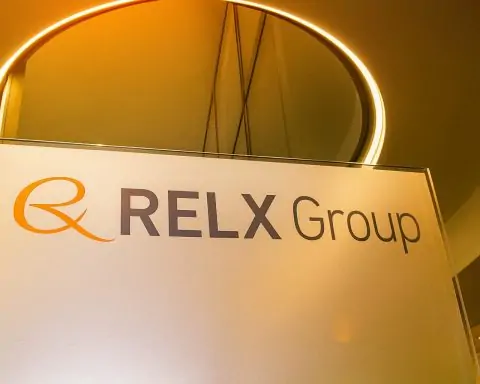- All-Time High Stock Price: Uranium Energy Corp’s share price hit a record high of around $15 in early October 2025, reflecting surging global demand for nuclear power and even AI’s insatiable need for energy [1]. The stock is up over 100% year-on-year, including a 10.9% jump just this past week [2], and has gained an astounding 1,376% in five years amid the nuclear power renaissance [3].
- Major Cash Raise for Expansion: UEC raised ~$234 million in a public equity offering in October 2025 (15.5 million shares at $13.15, plus underwriters’ over-allotment) [4]. The proceeds will fund development of a new U.S. uranium refining and conversion facility – a first-of-its-kind plant aimed at strengthening America’s nuclear fuel supply chain [5].
- Strong Financial Position: The company has no debt on its balance sheet and a hefty current ratio (~8.9) as of October 2025 [6]. UEC even held off selling some uranium earlier in the year to wait for higher prices, a strategy that paid off – recent sales averaged >$82 per pound U₃O₈ with spot uranium prices now above $82, the highest in over a decade [7]. Fiscal 2025 revenue jumped to $66.8 million as the company capitalized on rising prices [8].
- Analyst Sentiment: Wall Street analysts are largely bullish on UEC. The stock carries a consensus “Buy” rating [9], with price targets ranging roughly from $10.50 up to $19.75 per share [10] [11]. (H.C. Wainwright recently upped its target to $19.75 [12].) However, some valuation models suggest the current price (~$15) is “about right” relative to fundamentals [13] [14], implying future gains will hinge on continued execution and uranium market strength.
- Nuclear Sector Tailwinds: A global uranium boom is lifting UEC and its peers. Uranium oxide prices have climbed to ~15-year highs on the back of a worldwide nuclear energy revival, with annual uranium demand projected to double by the 2030s [15] [16]. Governments are embracing nuclear power to meet climate goals and energy security needs – the U.S. aims to triple nuclear capacity by 2050 (while banning Russian uranium imports) [17], and even Europe is reclassifying nuclear as green investment, reversing decades of phase-outs [18]. Tech giants are also jumping in: Microsoft, Amazon, and others have announced big investments and power deals in nuclear projects to secure clean energy for data centers [19]. These trends create a favorable backdrop for UEC’s growth.
Overview of Uranium Energy Corp (UEC)
Uranium Energy Corp is a U.S.-based uranium mining and exploration company founded in 2003 (NYSE American: UEC). Headquartered in Corpus Christi, Texas, UEC has become “America’s largest and fastest growing supplier of uranium” for nuclear energy [20]. The company’s business model focuses on low-cost in-situ recovery (ISR) mining in the United States and high-grade conventional uranium projects in Canada [21]. This two-pronged approach lets UEC rapidly develop domestic uranium sources while also holding stakes in some of the world’s richest uranium districts.
UEC operates on a “hub-and-spoke” strategy for ISR production. It has three regional processing hubs – including fully licensed central processing plants in South Texas and Wyoming – each fed by satellite ISR wellfield projects [22]. Seven of these satellite uranium mine projects already have major permits in place [23], positioning UEC to quickly ramp up output as needed. Notably, in August 2024 the company restarted uranium extraction at its Christensen Ranch ISR project in Wyoming, sending uranium-loaded resin to the nearby Irigaray plant (UEC’s Wyoming processing hub) [24]. In South Texas, UEC’s hub includes the Hobson processing plant and nearby ISR mines like Palangana, with a new wellfield at Burke Hollow approaching startup. These ISR operations are prized for their low operating cost and environmental advantages (they circulate fluids through underground ore to recover uranium, rather than digging open pits or shafts).
Beyond its U.S. production centers, Uranium Energy Corp has amassed a diversified portfolio of uranium assets. This includes interests in several advanced projects in Canada’s Athabasca Basin – home to the world’s highest-grade uranium deposits – such as the Roughrider and Shea Creek projects [25]. UEC also holds uranium exploration properties in Arizona, New Mexico and Paraguay [26], plus even some titanium mineral projects (a byproduct opportunity in Paraguay) [27].
Strategically, UEC has been preparing for a complete nuclear fuel cycle role. The company owns one of the largest U.S.-based inventories of physical uranium (warehoused U₃O₈ stockpiles) [28], which it can sell or deploy for strategic contracts. It also owns a significant equity stake in Uranium Royalty Corp, the only pure-play uranium royalty company [29], providing exposure to various global uranium projects. Perhaps most ambitiously, UEC has launched an initiative to become the only vertically integrated American uranium company – spanning mining, processing, and refining/conversion of uranium [30]. In 2025 the company formed a new subsidiary, United States Uranium Refining & Conversion Corp (UR&C), to develop a state-of-the-art uranium refining and UF₆ conversion facility in the U.S. [31]. If realized, this plant would restore domestic capability to convert mined uranium oxide into hexafluoride feed for enrichment (a step currently done only by one aging facility in Illinois). This vertical integration would give UEC end-to-end control in delivering fuel for nuclear reactors – a timely advantage as the U.S. seeks to reduce reliance on foreign (especially Russian) uranium services [32].
Overall, after two decades of groundwork, Uranium Energy Corp has evolved into a leading independent uranium firm. It combines near-term production (from U.S. ISR mines), mid-term growth projects (like new Texas and Wyoming wellfields coming online), and long-term upside via its Canadian assets and planned refinery. UEC’s unique asset mix and aggressive growth strategy have positioned it at the forefront of the ongoing nuclear energy revival.
Stock Price and Recent Performance (as of Oct 11, 2025)
As of October 11, 2025, UEC’s stock is trading around $15 per share, after a remarkable rally in recent months. On October 10, the stock surged intraday to a new 52-week high of $15.17 (up about 10% in a single session) before closing just above $15 [33]. This milestone caps a strong upward trend: the shares were in the low-teens a month ago and previously hit $15.06 on September 23, 2025 [34], meaning UEC has essentially retested and exceeded its late-September peak. Over the past month, the stock has climbed roughly 25–30%, continuing a broader uptrend that began earlier in 2025.
Zooming out, momentum has been impressive. In the first week of October alone, UEC jumped about 10.9% [35]. Over the last year, the stock price has more than doubled (up ~106% year-on-year) [36], vastly outperforming the broader market. Longer-term shareholders have seen exponential gains: UEC’s share price is up over 1,300% in five years [37], a reflection of both the company’s growth and renewed investor enthusiasm for the uranium mining sector. This momentum has come with high trading volumes and increasing attention – for example, the spike to $15.17 on Oct 10 saw 6.75 million shares traded, far above normal levels, “reflecting strong market interest” in UEC [38].
It’s worth noting that UEC’s stock, like many commodity-linked equities, can be volatile. Its 50-day average price is around $11.6 and the 200-day average about $7.9 [39], indicating how sharply the stock has risen in recent months. The beta of ~1.4 suggests higher volatility than the overall market [40]. The rapid ascent in late 2024 and 2025 coincided with a surge in uranium prices and a flurry of positive news for nuclear energy (more on that below). While the stock’s trajectory has been largely upward, investors have seen brief pullbacks – for instance, UEC issued new shares in early October which momentarily pressured the price (the offering was priced at $13.15 [41], slightly below the prevailing market price). However, the market digested that dilution quickly, and the stock powered to new highs shortly after the financing, suggesting robust demand for UEC shares.
In summary, Uranium Energy Corp’s stock performance through October 2025 has been stellar. Hitting an all-time high around $15, UEC has ridden a wave of optimism about nuclear energy’s future. The past month’s run-up and record price highlight the current enthusiasm, while the multi-year gains underline how dramatically sentiment has shifted in favor of uranium producers. Of course, such rapid appreciation brings the question: can UEC maintain this momentum? The answer may depend on upcoming developments in both company-specific execution and the broader uranium market – which we explore next.
Recent News & Developments (Early October 2025)
The second week of October 2025 brought major developments for Uranium Energy Corp and the uranium industry at large:
- Capital Raise & Expansion Plans: On October 6, UEC closed a public offering of 15.5 million common shares at $13.15 each, raising about $203.8 million in gross proceeds. By October 9, the offering’s underwriter fully exercised an over-allotment option to purchase an additional ~2.33 million shares, adding $30.57 million [42]. In total, UEC brought in roughly $234 million fresh capital from these equity issuances. The company announced it will use the funds to “accelerate the development of a new, state-of-the-art American uranium refining and conversion facility” under its UR&C subsidiary [43] [44]. This infusion effectively fully finances UEC’s ambitious plan to build a domestic uranium conversion plant – a timely project as the U.S. government pushes to localize nuclear fuel production. The successful financing also underscores investor confidence in UEC’s growth strategy, as the offering was upsized and quickly absorbed by the market.
- Surging Stock on Nuclear Hype: By Friday, Oct 10, UEC’s stock price spiked on the back of bullish sentiment. In intraday trading, shares hit $15.17, a 12-month high, before closing around $15 [45]. Trading volume was extraordinarily high (over 6.7 million shares) as buyers piled in [46]. This mid-week stock surge followed news of the capital raise and a stream of positive industry news, effectively showcasing UEC as a prime beneficiary of the “nuclear renaissance” narrative. The 10% single-day jump on Oct 10 suggests traders reacted to some catalysts – likely a mix of uranium price highs and policy developments (see below) – viewing UEC as a go-to play on uranium. One financial outlet noted the achievement of the new high and pointed out it came with “significant trading volume… reflecting strong market interest” in UEC [47]. Notably, several Wall Street firms also updated their outlooks around this time, with analysts upgrading UEC and hiking price targets (for example, H.C. Wainwright’s target increase to $19.75 was reported on Oct 10) [48]. All of this contributed to positive momentum for the stock during the week.
- Global Uranium Demand & Policy Moves: The week’s news wasn’t just about UEC – it was rich with developments signaling stronger future uranium demand. In Washington D.C., policymakers doubled down on nuclear energy support. The United States formally announced a goal to triple domestic nuclear power capacity by 2050, as part of a broader push for clean energy and grid stability [49]. To help achieve this, U.S. leaders enacted the ADVANCE Act to modernize reactor licensing, and President Biden signed executive orders to fast-track nuclear projects (including leasing federal lands at Savannah River and Oak Ridge for next-generation, AI-powered data center reactor sites) [50]. Perhaps most immediately impactful for uranium miners, the U.S. moved to ban imports of Russian uranium fuel – eliminating a major supplier by the end of the decade – and rolled out a $2.7 billion program to rebuild America’s nuclear fuel supply chain [51]. This includes funding for domestic uranium enrichment, conversion, and mining – exactly the areas UEC operates in or is expanding into. Such government actions, announced or highlighted in early October, provide strong tailwinds for companies like UEC that can fill the gap with home-sourced uranium and services.
- Tech Industry Partnerships: Early October also saw striking examples of the private sector’s embrace of nuclear power, which bodes well for long-term uranium demand. Tech giants are partnering with nuclear projects at an unprecedented scale. For instance, Microsoft made headlines for signing a 20-year power purchase agreement to restart a dormant 835 MW nuclear reactor (Pennsylvania’s Three Mile Island Unit 1) specifically to supply its energy-hungry data centers, and it also inked a deal with fusion startup Helion for future power [52]. Amazon announced a $500 million investment into advanced reactor developer X-energy and is working with utility Energy Northwest to deploy small modular reactors (SMRs) for its cloud data centers [53]. Likewise, Meta (Facebook), Google, and others reportedly are bidding for gigawatt-scale nuclear power contracts, as companies realize AI and cloud computing operations need reliable carbon-free power that only nuclear can provide [54]. These partnership announcements, many of which emerged in late September and early October, underline a new source of demand for nuclear energy outside traditional utilities – a development that ultimately implies more uranium fuel will be needed.
- Global Nuclear Pledges: In a symbolic capstone to the week’s news, a coalition of 14 major technology firms (likely including the aforementioned Microsoft, Amazon, etc.) signed on to a “Large Energy Users Pledge” supporting the tripling of worldwide nuclear capacity by 2050 [55]. This pledge, reported in early October 2025, commits some of the world’s biggest power-consuming companies to help drive nuclear deployment and to procure zero-carbon power for their operations. It sends a strong demand signal: if nuclear capacity is to triple globally, uranium consumption will correspondingly surge in coming decades. Alongside this, international nuclear cooperation is accelerating – e.g. Uzbekistan signed a deal with Russia’s Rosatom to build new reactors, Kazakhstan announced plans for a second nuclear plant, and countries from Italy (which just approved legislation for SMRs) to Indonesia are initiating nuclear programs [56]. Even the European Union has reclassified nuclear energy as a green investment, and countries like Belgium, the Netherlands, and the UK are reversing course on nuclear phase-outs [57]. All these news items from the past week paint a picture of growing global commitment to nuclear power, which in turn strengthens the long-term market for uranium suppliers such as UEC.
In sum, the October 7–11, 2025 period was eventful: Uranium Energy Corp fortified its balance sheet for expansion and saw its stock soar to record levels, while at the same time public and private sector developments signaled robust future demand for uranium. UEC finds itself in a favorable spot to capitalize on these trends, with fresh capital and policy support aligning with its business plans.
Expert Analysis: UEC’s Market Position, Financial Health & Growth Potential
Market Position & Strategy: Industry analysts and experts generally view Uranium Energy Corp as a well-positioned player in the uranium boom. The company’s focus on ISR mining in the U.S. and its aggressive expansion into refining/conversion give it a unique role. MarketMinute recently described UEC as being at the “forefront” of the new nuclear energy paradigm, thanks to its domestic production base and plans to fill critical gaps in the fuel cycle [58]. In an era when nations are scrambling for reliable, local uranium supply, UEC’s U.S.-centric asset portfolio is a strategic strength. The company can market itself as a homegrown supplier of nuclear fuel at a time when geopolitical tensions (e.g. Russia sanctions) make western utilities wary of overseas dependence. UEC’s large physical uranium inventory is another strategic tool – it allowed the company to time sales for maximum profit and could also be used to jump-start deliveries under new long-term contracts.
UEC’s financial health is also a positive standout. The company carries zero debt and ended fiscal 2025 with a robust liquidity position [59]. Its current ratio (current assets vs. liabilities) near 8.9 indicates ample working capital [60]. This conservative balance sheet gives UEC flexibility to invest in projects and weather commodity price fluctuations. In fact, management’s decision to withhold uranium sales in the latter half of FY2025 (rather than sell at lower prices) is seen as savvy and indicative of a strong financial cushion. By waiting, UEC sold those pounds in recent months at prices north of $80, versus ~$50–60 a year prior – significantly boosting revenue [61]. The result was a sharp rise in annual revenues to $66.8M in 2025 [62] and likely improved margins on those deferred sales. This ability to self-fund and strategize (without needing to dump product for cash) is a competitive edge that not all junior miners have.
Analyst Sentiment: Wall Street’s outlook on UEC is largely optimistic. Multiple analysts have recently upgraded the stock or raised price targets, citing UEC’s strengthened fundamentals and the bullish uranium market. As of mid-October 2025, 12 analysts cover the stock with 10 Buys/Strong Buys and 2 Holds, and a consensus price target around $13.80 (slightly below the current price) [63]. Notably, H.C. Wainwright, a leading investment bank in the space, upped its target to $19.75 per share in late September [64], one of the highest targets on the street. Analysts at Roth Capital and Stifel have likewise issued bullish notes in recent weeks, reflecting confidence in UEC’s growth story [65]. A key point in many analyses is UEC’s lack of debt and war chest of cash – a rare combination for a mid-tier mining company – which means the company can execute its expansion plans without heavy external financing or fear of insolvency [66]. Another positive sign: institutional investors have been accumulating UEC shares. Over 62% of UEC’s float is owned by institutions and funds [67], indicating that big money sees long-term value. (For context, institutional ownership above ~60% is quite high for a company of UEC’s size and speaks to confidence from sophisticated investors.) Big names like State Street, Geode Capital, and even Norway’s sovereign wealth fund took or increased positions in UEC during 2024-2025 [68] [69].
Growth Drivers: Experts identify several growth drivers for UEC moving forward. First, the company’s expansion of production in its existing hubs should boost output quickly now that uranium prices justify increased activity. The resumption of mining in Wyoming and development of new wellfields in Texas (e.g. Burke Hollow) mean UEC could substantially increase its U₃O₈ extraction in the next 1-2 years without waiting for entirely new mines to be permitted. Second, UEC’s entry into the refining/conversion business could be a game-changer. If it succeeds in building the UR&C conversion facility, UEC would not only supply raw uranium but also offer conversion to utilities or the government – tapping an additional revenue stream (conversion services) that currently has virtually no competition in the U.S. Analysts have lauded this vertical integration move; one noted it positions UEC to be “the only vertically integrated U.S. uranium company” with capabilities from mining through conversion [70]. In an environment where the U.S. is funding domestic fuel-cycle infrastructure, UEC could even receive government support or contracts for this facility. Third, UEC’s Canadian projects hold long-term potential. Assets like Roughrider (acquired from Rio Tinto) contain high-grade uranium that could become mines later in the decade. While those won’t contribute in the near term, they add underlying asset value and make UEC a potential partner for larger companies looking for Athabasca basin exposure.
Risks & Valuation: Despite the positives, some commentators urge caution, noting that UEC’s stock price now reflects a lot of good news. The tremendous rally has pushed the company’s market capitalization to roughly $7 billion [71], which is high relative to its current earnings (UEC is not yet profitable, with negligible free cash flow and a net loss in the last 12 months). Traditional valuation metrics flash warnings – for example, at $15/share UEC was recently trading around 6.9 times its book value, far above the industry average P/B of 1.4 [72]. The equity analysts at Simply Wall St performed a detailed valuation and found that by their models, “Uranium Energy scores 0/6 on valuation checks”, meaning it doesn’t appear undervalued by any standard metric at the moment [73]. Their discounted cash flow (DCF) analysis estimates a fair value of ~$14.22 for UEC, which is only about 3% below the current share price [74]. In other words, after the latest run-up, the stock is “priced about right” relative to its projected cash flows and growth outlook [75]. This doesn’t imply UEC lacks upside – rather, it suggests the easy gains may have been realized, and future upside will need to be earned through continued delivery of results (or higher uranium prices).
Analysts also highlight execution risks. UEC’s valuation is premised on successfully bringing new production online and building the conversion plant; any delays, cost overruns, or technical issues in these projects could disappoint investors. Additionally, while uranium prices are strong now, they can be cyclical – a pullback in uranium to say $60/lb would reduce UEC’s near-term earnings power and could dampen sentiment on the stock. Finally, UEC may choose to make further acquisitions or investments (as it has in the past), which could mean additional share issuances or integration challenges. That said, the company’s track record under CEO Amir Adnani has been one of opportunistic growth – picking up assets during the last uranium downturn – and now leveraging them as the market improves.
In summary, expert commentary on UEC is favorable but balanced. The company is praised for its strong financial footing, savvy strategic moves, and prime positioning in a rising market. It’s essentially a pure-play on the western nuclear resurgence, and so far it has executed well to capitalize on that theme. However, with the stock at all-time highs and a rich valuation, there is an understanding that UEC must “prove” its lofty valuation by hitting development milestones and eventually generating significant profits. The good news is that the macro environment is providing plenty of opportunity for UEC to do so.
Uranium Industry Trends and Geopolitical Factors
The broader uranium mining industry is experiencing its most bullish phase in over a decade, driven by a confluence of factors on both the demand and supply side. Understanding these trends is key to assessing UEC’s future prospects, since the company’s fate is tightly linked to the health of the uranium market.
Booming Global Demand: After a long post-Fukushima slump, demand for uranium is sharply on the rise. There are 60+ nuclear reactors under construction worldwide and hundreds more proposed or planned. Major economies are extending the lifespans of existing nuclear plants and greenlighting new ones to meet climate targets and replace fossil fuels. Analysts predict global uranium demand could roughly double to about 300–350 million pounds per year by the late 2030s [76]. For perspective, in 2022 the world consumed around 180 million lbs of U₃O₈, so doubling would be a massive increase. This demand surge is expected as nuclear energy’s share of the electricity mix expands in the 2030s.
Several trends underpin this renaissance:
- Climate Change and Energy Security: Nations seeking to reduce carbon emissions are turning back to nuclear for reliable baseload power. Nuclear provides steady 24/7 electricity with no greenhouse gases, complementing intermittent renewables. The energy crises of recent years (e.g. Europe’s natural gas shortage) also highlighted nuclear’s role in energy security. Even Japan, which idled reactors after 2011, has restarted many and aims to build next-gen plants. Europe is a case in point – the EU’s decision to label nuclear as a “green” investment in its sustainable finance taxonomy [77] removed a major stigma, unleashing funding for nuclear projects. Countries like France, Britain, Finland, and Poland are all investing in new reactors or life-extension. Notably, Belgium and Germany, which were phasing out nuclear, have reevaluated (Germany shut its last reactors in 2023 but faces pressure to reconsider, while Belgium delayed its phase-out). The Netherlands is planning new plants, Italy (nuclear-free since 1987) just passed legislation to allow SMRs [78], and Sweden announced a goal to build more reactors. This policy U-turn in Europe is creating fresh demand for uranium where there was none a few years ago.
- Emerging Markets & Asia:China and India are building reactors at a breakneck pace – China alone has ~20 reactors under construction and more than 70 planned, aiming to triple its nuclear capacity by 2035. India is expanding its fleet as well. Newcomer countries across Asia, the Middle East, and Africa are embracing nuclear: Indonesia, Vietnam, Egypt, Turkey, Saudi Arabia, and even sub-Saharan African nations have plans for their first reactors in the coming decade [79]. Kazakhstan (the world’s top uranium producer) is even looking to build its first nuclear power station [80] to meet domestic needs. And in an interesting twist, big tech companies globally are becoming direct nuclear customers (as noted, firms like Microsoft, Google, Amazon plan to buy reactor output to power data centers). This Large Energy Users Pledge to triple nuclear by 2050 underscores that beyond governments, private sector demand for clean energy will drive nuclear growth too [81].
All told, the narrative has flipped: after decades of stagnation, nuclear power is widely seen as a critical solution to achieve net-zero targets and ensure stable electricity for growing economies and tech infrastructure. This translates into a strong long-term growth trajectory for uranium consumption, since every new reactor requires a steady supply of uranium fuel (each 1 GW reactor needs on the order of ~500,000–700,000 lbs of uranium per year at full operation).
Supply Challenges and Geopolitical Shifts: On the supply side, the uranium industry is struggling to catch up after a prolonged downturn that saw many mines closed or put on care-and-maintenance. The recent price surge is largely because supply was tight to begin with, and new pressures have emerged:
- Mining Output & Bottlenecks: Currently, mine production (about 130 million lbs in 2022) falls significantly short of consumption, with secondary supplies and stockpile drawdowns covering the rest. Inventories built up over years of surplus are being drawn down as utilities contract for new supplies. Bringing new mines into production takes time (often 5-10 years of permitting and development). Even some existing producers face issues – for example, Kazatomprom in Kazakhstan, which provides ~40% of global uranium, has signaled it cannot rapidly expand output and in fact had operational challenges that lowered its production outlook [82]. Any disruption in Kazakhstan (which is land-locked and ships uranium through Russia) is a serious risk factor for global supply. Similarly, Canada’s top mines had reduced output for years (Cameco’s McArthur River only recently restarted). Thus, there is a near-term supply pinch: few new mines are ready to fill the gap in the next couple of years, which supports high prices.
- Geopolitical Tensions: Geopolitics are heavily impacting uranium supply chains. The Russia–Ukraine war has prompted western countries to rethink their reliance on Russian nuclear services. While Russia isn’t a major miner of uranium, it dominates the enrichment segment and also supplies converted uranium. Both the U.S. and Europe have been weighing or implementing bans on Russian nuclear fuel imports. The U.S. in particular has now legislated a ban on Russian uranium purchases (with a phase-in period) [83]. This is significant because U.S. utilities had been buying nearly 20% of their uranium from Russia (and more if including Russian-enriched EUP). To replace that, they must turn to domestic suppliers like UEC or allied sources (Canada, Australia, Kazakhstan if it can be routed outside Russia). Additionally, the coup in Niger in mid-2023 cast uncertainty on one of the world’s larger uranium exporters (Niger supplies ~5% of global uranium and around a quarter of France’s uranium). The new military regime has threatened to stop uranium exports to France/EU, raising concerns of supply disruption. While these geopolitical events primarily affect who buys from whom (rather than eliminating uranium atoms from the market), they are causing a major reshuffling of supply chains and could lead to regional shortages. Western utilities are contracting more with non-Russian suppliers and stockpiling where possible, thereby tightening the market.
- Fuel Cycle Constraints: Beyond mining, there are chokepoints in the uranium fuel cycle – notably conversion and enrichment capacity. Conversion (U₃O₈ to UF₆) is required before uranium can be enriched for reactor use. But conversion facilities are scarce; the West’s main plant (ConverDyn’s Metropolis Works in Illinois) was idle for years and only recently restarted, and others are in Canada, France, and Russia. With more uranium coming to market, conversion services have become a bottleneck, and prices for conversion have spiked. Similarly, enrichment (turning UF₆ into reactor-grade material) is dominated by Russia’s Tenex and by Urenco (EU) and Orano (France); expansion of enrichment capacity is expensive and slow. These bottlenecks mean that even if enough uranium ore is mined, getting it processed into fuel is challenging. The U.S. government’s $2.7B program aims to address some of this – including establishing domestic enrichment for high-assay low-enriched uranium (HALEU) needed for advanced reactors – but results will take years [84]. For uranium miners like UEC, these midstream constraints indirectly benefit them by creating a sense of scarcity and urgency in the market. In fact, UEC’s plan to build a conversion plant directly targets this issue and could make it a very strategic player if successful.
Uranium Price Resurgence: The supply-demand imbalance and geopolitical worries have led to a powerful upswing in uranium prices. Spot uranium prices have climbed from under $30/lb in 2020 to over $80 per pound in late 2025, reaching the highest levels since 2011. By October 2025, prices were hovering around $82/lb [85], which is roughly a 12-year high (and a far cry from the ~$18 low of 2016). Market observers note that investors have been pouring into uranium as a thematic play – for instance, the Sprott Physical Uranium Trust and uranium mining ETFs have seen substantial inflows, effectively sequestering physical uranium from the market and driving prices further up [86]. Sprott’s Uranium Miners ETF (URNM) and Global X Uranium ETF (URA) have both outperformed broader indexes in 2025, indicating bullish sentiment. Industry insiders describe the uranium market as having “momentum on its side” going into 2026 [87]. Many utilities, after years of buying hand-to-mouth, are now scrambling to sign long-term contracts before prices rise further. This contracting cycle (2024–2025) is expected to lock in a lot of demand at higher price points, which in turn can underpin further supply investment.
However, the uranium rally has also sparked talk of a potential “uranium bubble” or at least short-term overheating. Some equities (particularly junior uranium exploration stocks and advanced nuclear startups) have seen speculative surges. Analysts caution that if prices spike too high, it could incentivize dormant projects to restart or new entrants to flood the market a few years out, which could eventually cap the rally. Also, nuclear energy, while trending positive, still faces challenges: regulatory hurdles, high upfront plant costs, public perception issues, and competition from ever-cheaper renewables in some regions. These factors could slow the rate of nuclear expansion from the most optimistic forecasts. In the near term though, the consensus is that uranium supply will remain tight and prices well-supported, especially given the time lag for new mines and facilities to come online.
Geopolitical Upshot: For a company like UEC, these industry and geopolitical trends are largely favorable. UEC is a western supplier in a market moving away from Russian reliance; it has production-ready assets in a period of shortage; and it is embarking on exactly the kind of fuel-cycle project (conversion) that governments want to see. One risk is that if geopolitical tensions ease (for instance, if sanctions on Russian uranium were lifted hypothetically), uranium prices could soften. But at least for the coming years, the trajectory appears to be more, not less, separation between East-West nuclear trade, meaning countries will pay a premium for “friendly” sources of uranium. UEC, being based in the U.S., stands to benefit from any U.S. government contracts (like contributing to a national uranium reserve) and from utility buyers seeking diversity of supply.
In summary, the uranium industry’s fundamentals are the strongest in years: demand is rising due to a nuclear resurgence, while supply is playing catch-up and facing new geopolitical filters. Uranium prices at multi-year highs reflect this new reality. For Uranium Energy Corp, these trends create a supportive environment – essentially a rising tide that the company is positioned to ride, provided it can execute on its growth plans.
Forward-Looking Analysis and Stock Forecast
Looking ahead, Uranium Energy Corp’s future appears bright but will depend on a combination of external market conditions and internal execution. Below we consider the outlook and key factors that could influence UEC’s stock and business in the coming quarters and years:
1. Uranium Market Trajectory: The single biggest wildcard is the price of uranium. UEC’s fortunes are highly leveraged to uranium price movements. If the current uranium bull market continues – with prices sustaining in the $80s or even climbing toward prior highs (~$100+ per lb) – UEC could see significant revenue and profit growth. High prices would justify maximal production from UEC’s existing operations and likely make even more of its projects economically viable. Every extra dollar in uranium price goes almost straight to the bottom line for low-cost producers like UEC. On the flip side, if uranium prices were to pull back (say due to a global recession reducing power demand, or a short-term oversupply), UEC’s growth story could temporarily stall. Many analysts are long-term bullish on uranium due to the structural deficit, but volatility is expected. UEC has the advantage of a strong balance sheet to weather dips, but sustained low prices (e.g. back to $40–50) would probably defer some of its expansion plans. Most forecasts, however, foresee uranium staying elevated – for example, Sprott’s analysts point to at least the end of this decade as being supply-constrained [88]. That implies UEC will be operating in a favorable price environment, which bodes well for its stock if it can translate that into earnings.
2. Production Growth and New Projects: In the near term (next 1-2 years), investors will be watching how quickly UEC can ramp up uranium production at its mines. With Christensen Ranch (WY) resumed and Burke Hollow (TX) nearing first extraction, UEC could meaningfully boost its output in 2026. Any positive news on increasing production volumes or hitting production milestones ahead of schedule could act as a catalyst for the stock. By contrast, delays or technical hiccups (e.g. slower than expected wellfield development or processing plant issues) might curb enthusiasm. UEC will also be filing updated resource and reserve reports for its projects; significant increases in reserves or grades could improve the company’s valuation metrics (as it would extend mine life or lower costs). The Sweetwater plant in Wyoming (acquired from Uranium One) is another asset to watch – UEC has been working to bring it into operation as a third hub. Progress there would be a bullish sign.
On the exploration front, UEC’s assets in Canada (from the UEX Corporation acquisition) could deliver upside surprises. A major new discovery or a JV with a larger miner in the Athabasca Basin could unlock value from those projects which the market might currently be assigning minimal value (given they are longer-term). However, these are secondary to UEC’s core U.S. production plans for now.
3. UR&C Conversion Facility: A pivotal mid-term development is the planned Refining & Conversion plant. UEC aims to use the ~$234 million it raised to design and start building this facility. While still in early stages, we can anticipate key news: selection of a site (possibly in Texas or Wyoming), licensing progress with the Nuclear Regulatory Commission, partnership announcements (UEC might seek a technology partner or government grant), and construction timelines. If UEC can demonstrate steady progress – say, breaking ground and stating an expected completion year (perhaps by 2027 or 2028) – it will reinforce the market’s confidence that UEC will achieve vertical integration. Successful execution here would likely warrant a higher valuation multiple for UEC because conversion services typically command stable fees and could make UEC less exposed to just mining margins. There is also the prospect that the U.S. government or utilities could enter contracts or offtake agreements for this future facility, given the strategic importance. Any such contract (for example, a DOE agreement to purchase conversion services or low-enriched uranium made from UEC’s facility) would be a huge validation and could significantly boost the stock. Conversely, if the conversion project encounters obstacles (delays in permitting, cost inflation, etc.), investors might grow impatient since the payoff is still a few years out. At this early stage, the market is likely giving UEC partial credit for the idea of the plant; proving it out will be crucial for long-term upside.
4. Financial Performance and Earnings: As UEC transitions from development mode to production mode, its financials will start to matter more in traditional valuation. Analysts expect UEC to turn profitable within the next year or two as higher sales volumes coincide with high uranium prices [89]. When UEC begins reporting sizable earnings per share (EPS), it could attract a broader range of investors (including those who prefer companies with actual earnings). The company’s earnings leverage is high: with no debt interest and relatively fixed operating costs at its plants, a rise in uranium prices or output could lead to outsized percentage increases in profit. For instance, selling an extra 100,000 lbs at $80 is $8M more revenue which, after costs (maybe $25/lb), could be ~$5M gross profit – meaningful for a company that might have only tens of millions in costs. If UEC posts quarters with strong earnings beats (helped by its now-ongoing sales at >$80/lb), it could spur further stock gains. On the other hand, any disappointments (e.g. if costs come in higher, or if for some reason UEC’s realized sale prices lag spot prices) could cause volatility. One area to watch is contracting strategy: UEC so far has been mostly selling on spot or short-term deals. It may start signing long-term contracts with nuclear utilities, which typically lock in a fixed or floor price. While that ensures stable income, it might be at prices below the current spot. Investors often prefer miners to lock in some sales for stability but keep upside on others. How UEC balances spot vs contract sales will affect its average realized price and revenue predictability.
5. Stock Valuation and Investor Sentiment: At around $15, UEC’s stock is, as discussed, priced near many analysts’ fair value estimates. The consensus target of $13.8 implies a small downside, suggesting the stock is no longer “cheap” [90]. However, targets often lag fast-moving stocks; if uranium prices keep rising or if UEC announces positive developments, analysts will likely revise targets upward. The most optimistic scenarios (like H.C. Wainwright’s ~$19.75 call) see roughly 30%+ upside from here [91]. For UEC to reach those levels, it probably needs a combination of $90+ uranium prices and visible progress on its growth initiatives. Some bullish commentators speculate that UEC could eventually trade in line with larger peer valuations if it executes well – for example, Cameco (a much bigger company) trades at a high multiple due to its entrenched market position. If UEC can transform into a multi-mine producer with conversion capabilities, it might command a premium as a strategic asset. M&A is another factor: as uranium markets tighten, larger companies might look to acquire reserves and production. UEC’s diverse asset base could make it a takeover target (for instance, one could envision a major fuel cycle company or even a state-owned entity finding UEC attractive for its U.S. footprint). There are no public indications of any such talks, but the mere possibility can add a takeover premium in investors’ minds during hot markets.
For the average investor, one important consideration is volatility and time horizon. UEC’s stock will likely continue to experience swings. It could pull back from highs if, say, uranium spot prices dip or if there’s a general market correction. But if one’s thesis is that the nuclear renaissance is a multi-year story, then dips could be buying opportunities. Many analysts covering UEC emphasize the long-term narrative: the world will need a lot more uranium, and UEC is in prime position to supply a chunk of it, especially to the U.S. market. That underpins a bullish long-term outlook.
In conclusion, the stock forecast for UEC is cautiously optimistic. Current data and expert views suggest that UEC’s valuation is fair relative to known factors, but there is considerable optionality in the story – success in its projects or further uranium price increases could drive the stock higher. Conversely, the stock’s lofty gains could face consolidation if any part of the story falters. For now, UEC is riding powerful industry tailwinds, has ample cash to execute its plans, and enjoys strong investor backing. If nuclear energy demand continues to swell as expected and UEC hits its development milestones, the company is poised for continued growth. Investors should watch upcoming earnings reports, production updates, and policy developments for signals. The next chapters for Uranium Energy Corp will be about turning opportunity into output – and thereby justifying the excitement that has propelled UEC stock to its current heights.
Sources:Uranium Energy Corp Press Releases, October 2025 [92] [93]; MarketBeat – UEC Hits New High [94] [95]; MarketMinute Analysis (Oct 10, 2025) [96] [97]; Simply Wall St – Valuation Review [98] [99]; TS2.tech Nuclear Industry Reports [100] [101]; Others as cited above.
References
1. markets.financialcontent.com, 2. simplywall.st, 3. simplywall.st, 4. markets.financialcontent.com, 5. www.prnewswire.com, 6. markets.financialcontent.com, 7. markets.financialcontent.com, 8. markets.financialcontent.com, 9. www.marketbeat.com, 10. markets.financialcontent.com, 11. www.marketbeat.com, 12. www.marketbeat.com, 13. simplywall.st, 14. simplywall.st, 15. ts2.tech, 16. ts2.tech, 17. ts2.tech, 18. ts2.tech, 19. ts2.tech, 20. www.prnewswire.com, 21. www.prnewswire.com, 22. www.prnewswire.com, 23. www.prnewswire.com, 24. www.prnewswire.com, 25. www.marketbeat.com, 26. www.marketbeat.com, 27. www.marketbeat.com, 28. www.prnewswire.com, 29. www.prnewswire.com, 30. www.prnewswire.com, 31. www.prnewswire.com, 32. ts2.tech, 33. www.marketbeat.com, 34. markets.financialcontent.com, 35. simplywall.st, 36. simplywall.st, 37. simplywall.st, 38. www.marketbeat.com, 39. www.marketbeat.com, 40. www.marketbeat.com, 41. markets.financialcontent.com, 42. markets.financialcontent.com, 43. www.prnewswire.com, 44. www.prnewswire.com, 45. www.marketbeat.com, 46. www.marketbeat.com, 47. www.marketbeat.com, 48. www.marketbeat.com, 49. ts2.tech, 50. ts2.tech, 51. ts2.tech, 52. ts2.tech, 53. ts2.tech, 54. ts2.tech, 55. ts2.tech, 56. ts2.tech, 57. ts2.tech, 58. markets.financialcontent.com, 59. markets.financialcontent.com, 60. markets.financialcontent.com, 61. markets.financialcontent.com, 62. markets.financialcontent.com, 63. www.marketbeat.com, 64. www.marketbeat.com, 65. www.marketbeat.com, 66. markets.financialcontent.com, 67. www.marketbeat.com, 68. www.marketbeat.com, 69. www.marketbeat.com, 70. www.prnewswire.com, 71. www.marketbeat.com, 72. simplywall.st, 73. simplywall.st, 74. simplywall.st, 75. simplywall.st, 76. ts2.tech, 77. ts2.tech, 78. ts2.tech, 79. ts2.tech, 80. ts2.tech, 81. ts2.tech, 82. markets.financialcontent.com, 83. ts2.tech, 84. ts2.tech, 85. markets.financialcontent.com, 86. ts2.tech, 87. www.nucnet.org, 88. www.nucnet.org, 89. simplywall.st, 90. www.marketbeat.com, 91. www.marketbeat.com, 92. www.prnewswire.com, 93. www.prnewswire.com, 94. www.marketbeat.com, 95. www.marketbeat.com, 96. markets.financialcontent.com, 97. markets.financialcontent.com, 98. simplywall.st, 99. simplywall.st, 100. ts2.tech, 101. ts2.tech








